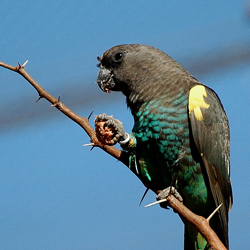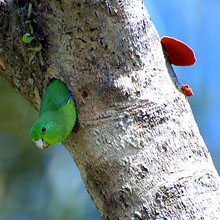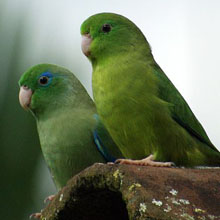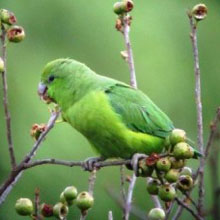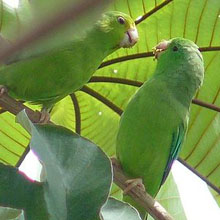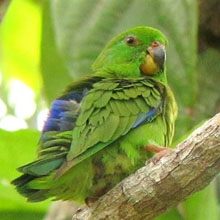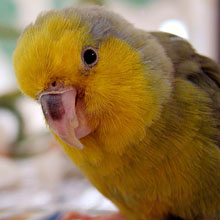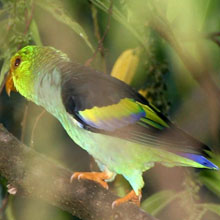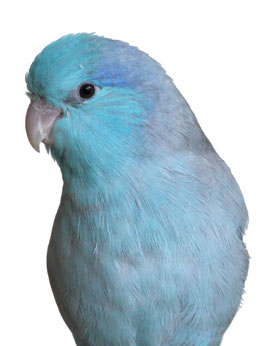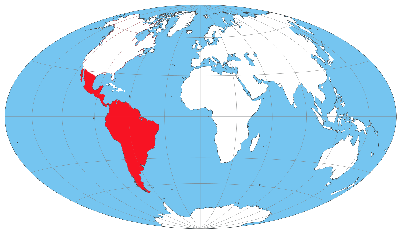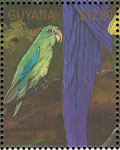Parrotlets
|
Parrotlets are often described as very large birds trapped in a little bird's body. These wonderful birds are certainly packed with lots of personality and have become one of the most popular small pet birds. They are like having a miniature amazon parrot without the screaming. Parrotlets are intelligent, curious, feisty, fearless and playful. They enjoy interacting with the humans around them and sometimes they are called a "pocket parrot". Parrotlets love to chew and should be provided with suitably sized destructible toys to keep them happy. They also love swings and sleeping tents. There are several species of parrotlet but only two are commonly kept as pets, the Pacific Parrotlet and the Green Rump Parrotlet. The Pacific Parrotlet is especially popular. Parrotlets are 4 - 5" tall, have stocky bodies and short broad tails. You can often tell the males from females due to slight color variations. For example, male Pacific Parrotlets have a blue streak behind their eyes. They are not known to be the best talkers, they have a small voice and typically will only learn up to about 10 words. Males are known to be better talkers than female parrotlets. |
|
|
|
|
|
Wild parrotlets are native to Mexico, South America and Central America. Their habitat ranges from lowland forests to shrublands. They can thrive in both dry and moist environments. They are often seen in small flocks ranging in size from a few pairs to up to 100 birds. The flock is mainly active in the early mornings and evenings. During breeding season they are often only seen in pairs. A parrotlet's green coloration is ideal camoflague against the forest and grassland colors to help protect them from predators. A parrotlet's diet in the wild consists mainly of grass seeds, leaf buds, flower blossoms, berries and other small fruits. Parrotlets mate for life and they make their nests in tree hollows. The female usually lays 4-5 eggs that hatch in about two weeks. Parrotlets are not considered as a threatened species in the wild. |
Listen to Pacific Parrotlets in the wild:
Forpus coelestis
© 2015 Cornell University
View a video of Pacific Parrotlets in the wild:
Source: The Internet Bird Collection |
|
|
|
||||||||||||||||||||||||||||||||
|
To see more pictures and obtain information about individual parrotlet species click on the links below:
|
|
Related Articles
 Parrots of the Americas
Parrots of the Americas







































